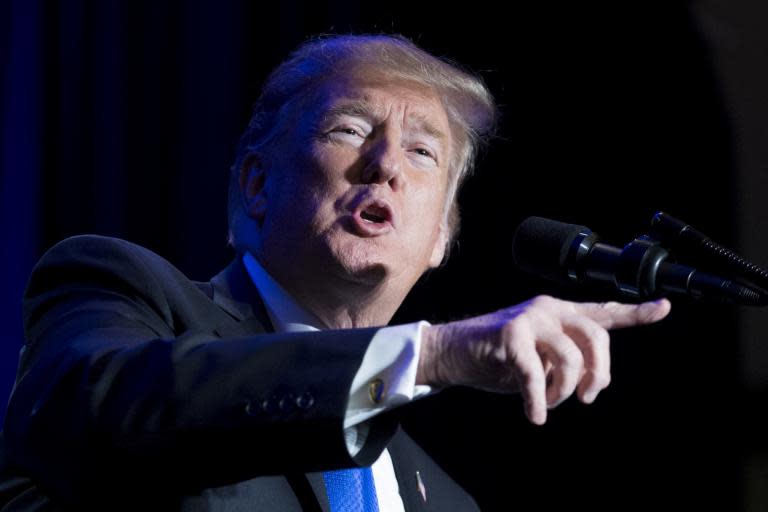Calling a national emergency is the most selfish thing Donald Trump has ever done
It seemed for a brief second that Trump had been able to reach a compromise with the Democrat-controlled House of Representatives. The fact that he had to sign off a bill in the Senate that would avert another highly unpopular government shutdown meant he could have blamed the failure to deliver his Mexican border wall on the Democrats and still retained some credibility with his MAGA fans. Because this was never really about a wall or immigration. It was a stunt pulled straight from reality TV to keep ratings high.
“Trump’s presidency is the real national emergency,” wrote Representative Ruben Gallego on Twitter, and as well as expressing a sentiment that many an American would agree with, also drew attention to an important fact. There is no universally agreed-upon definition of a national emergency in any part of the US political system. This means that the president has the option to declare one when he or she (well, let’s face it, he) sees fit, according to his own judgement and discretion. George W Bush declared a national emergency in the days following 9/11, for example.
Almost all active national emergencies – of which there are 31 – concern either terrorism or blocking money or exports going into certain countries (think North Korea, Cuba, Syria, Yemen, Libya, South Sudan, Iran.) Declaring a national emergency in relation to the Mexican border should require something as serious as the destabilisation in Somalia in 2010 or a relationship that has depreciated to the extent of America’s with North Korea in 2008. To declare a national emergency on the Mexican border in 2019 on the basis of illegal immigration, when most illegal immigrants who come to the United States do so by overstaying their legal visas and usually fly in rather than approaching the southern border on foot, is definitely unorthodox.
At the height of the (ongoing) European refugee crisis, when hundreds of boats per day were traversing the Mediterranean carrying thousands of people fleeing conflict or economic hardship, over a million people arrived (1,015,078 to be precise, in 2015.) That works out as 2,781 people per day. In support of Trump’s wall, Republican Senator Ron Johnson claimed that “close to 2,000 people per day” were approaching US ports of entry illegally. Politifact has debunked this number, although their workings did show that if the size of the “migrant caravan” from South America had been correctly estimated, then that amount of people could be expected to legally ask for asylum per day for some time after its arrival.
Bear in mind that the US has more territory than the entirety of the EU, and the EU countries combined already have more citizens so are more densely populated. And the EU can absorb this number of refugees and migrants just fine, whatever Nigel Farage might tell you.
Trump knows that he can’t just declare an emergency and have the wall built tomorrow. He’s likely to face legal challenges; he could even be blocked by Congress, if the Senate and the House choose to work together to prevent him from implementing his plan. Speaker of the House Nancy Pelosi responded to the announcement that he would declare a state of emergency by saying that she knows Republicans aren’t happy about the cost of the wall themselves. The implication was clear: the combined forces of anti-ICE, soft-socialist Democrats compassionate about immigration and anti-tax, libertarian Republicans horrified by the idea of what could be levelled on US taxpayers might end the dream of a fully realised wall costing more than $5bn.
There are some excellent conservative arguments against the wall, even if you’re not convinced by the liberal ones. Whichever way you look at it, the construction of this concrete/steel-slatted/bead curtain behemoth doesn’t make any sense for America. Calling for it to be built is probably the most selfish thing Donald Trump has ever done.
Perhaps the president thought, as his approval ratings failed to rally, that he had to put on a show of being more serious about his promises. Perhaps he saw that one government shutdown and then angry tweets about having to make deals with the Democrats wasn’t enough for the people who chanted: “Build the wall!” at his well-attended rallies. He knows such issues resonate with his fan base (see: splitting up families at the border and the so-called Muslim travel ban), and he knows that a little stirring of the pot can produce big results when needed.
Those approval ratings have jumped today (though they were on a slow but steady upward trajectory ever since the shutdown). If we assume that is what Trump really cared about all along, then he might make a show of being shackled by the Democrats and talk up the funding he did get for border reinforcements. In other words, we can expect that he might repeat the PR strategy he hoped would work last time, now he’s upped the ante.
Presumably Donald Trump was only as serious about “build the wall” as he was about “lock her up” – this tangerine narcissist has shown very little concern about the country he’s leading and a huge amount of concern about his own image over the last couple of years. And this is, after all, the same man who tweeted that he was ideologically opposed to declaring arbitrary national emergencies – “Repubs must not allow Pres Obama to subvert the Constitution of the US for his own benefit & because he is unable to negotiate w/ Congress” – back in 2014. But one wonders what will happen when his ire-ridden fan base realises his boldest slogans rarely translate into comparable action. How do you avoid the monumentally bad optics of that?

 Yahoo News
Yahoo News 

